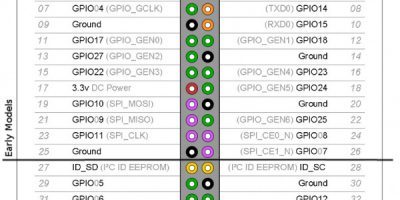In C programming, understanding memory management is essential to writing efficient and reliable code. Unlike many modern languages, C gives developers direct control over memory allocation and deallocation. This control comes with the responsibility to manage memory carefully to avoid memory leaks, segmentation faults, and other common pitfalls. This article will dive into memory management functions in C—malloc, calloc, realloc, and free—explaining when and how to use each effectively.
Why Manual Memory Management?
Memory management in C is manual, which means developers decide when and how much memory to allocate and release. This level of control enables precise optimization but also requires vigilance to avoid mistakes. Functions like malloc, calloc, realloc, and free are essential tools for dynamically managing memory in a C program.
malloc: Allocating Memory
The malloc (memory allocation) function is used to allocate a specified number of bytes of memory and returns a pointer to the beginning of the block. If the allocation fails, malloc returns a NULL pointer.
Syntax:
void* malloc(size_t size);Example:
#include <stdio.h>
#include <stdlib.h>
int main() {
int *ptr = (int*) malloc(5 * sizeof(int)); // Allocate memory for 5 integers
if (ptr == NULL) {
printf("Memory allocation failed\n");
return 1;
}
for (int i = 0; i < 5; i++) {
ptr[i] = i + 1;
}
for (int i = 0; i < 5; i++) {
printf("%d ", ptr[i]);
}
free(ptr); // Free the allocated memory
return 0;
}In this example, malloc allocates enough memory for 5 integers. Always check if malloc returns NULL before using the allocated memory.
calloc: Allocating and Initializing Memory
The calloc (contiguous allocation) function is similar to malloc, but it also initializes the allocated memory block to zero. This makes calloc useful when you need memory initialized to a known state.
Syntax:
void* calloc(size_t num, size_t size);num: Number of elements to allocate.size: Size of each element.
Example:
#include <stdio.h>
#include <stdlib.h>
int main() {
int *ptr = (int*) calloc(5, sizeof(int)); // Allocate memory for 5 integers, initialized to zero
if (ptr == NULL) {
printf("Memory allocation failed\n");
return 1;
}
for (int i = 0; i < 5; i++) {
printf("%d ", ptr[i]); // Outputs 0 for each element
}
free(ptr); // Free the allocated memory
return 0;
}Using calloc here ensures that all elements are initialized to zero, which can be helpful for applications that rely on predictable initial values.
realloc: Resizing Memory Blocks
The realloc (reallocation) function changes the size of a previously allocated memory block. It’s useful when you need to grow or shrink memory dynamically, such as in dynamic array implementations.
Syntax:
void* realloc(void* ptr, size_t newSize);ptr: Pointer to the memory block to be resized.newSize: New size in bytes.
Example:
#include <stdio.h>
#include <stdlib.h>
int main() {
int *ptr = (int*) malloc(2 * sizeof(int)); // Initial allocation for 2 integers
if (ptr == NULL) {
printf("Memory allocation failed\n");
return 1;
}
ptr[0] = 1;
ptr[1] = 2;
// Resize memory block to hold 4 integers
ptr = (int*) realloc(ptr, 4 * sizeof(int));
if (ptr == NULL) {
printf("Memory reallocation failed\n");
return 1;
}
ptr[2] = 3;
ptr[3] = 4;
for (int i = 0; i < 4; i++) {
printf("%d ", ptr[i]);
}
free(ptr); // Free the allocated memory
return 0;
}In this example, realloc resizes the memory block to hold 4 integers instead of 2. Be sure to check for NULL in case realloc fails.
free: Deallocating Memory
Every block of dynamically allocated memory should eventually be released back to the system using free. Failing to do so leads to memory leaks, where memory remains allocated and unusable even after it’s no longer needed.
Syntax:
void free(void* ptr);Example:
#include <stdlib.h>
int main() {
int *ptr = (int*) malloc(5 * sizeof(int));
if (ptr == NULL) {
return 1;
}
// Use ptr for operations...
free(ptr); // Release memory back to the system
return 0;
}Calling free releases the memory allocated by malloc, calloc, or realloc. After freeing, avoid using the pointer again unless you reallocate memory to it.
Common Pitfalls and Best Practices
- Always Free Allocated Memory: Every
mallocorcallocshould have a correspondingfreeto prevent memory leaks. - Avoid Double-Freeing: Freeing the same memory block more than once can cause undefined behavior. After freeing, set the pointer to NULL to avoid accidental reuse.
free(ptr);
ptr = NULL;- Check for NULL Pointers: Always check if
malloc,calloc, orreallocreturns NULL before using the pointer. - Use
callocfor Zero-Initialization: Prefercallocovermallocwhen you need memory initialized to zero. - Be Careful with
realloc:reallocmay return NULL if it fails. To avoid losing the original pointer, use a temporary pointer for the realloc call:
int *temp = realloc(ptr, newSize);
if (temp != NULL) {
ptr = temp;
} else {
// Handle reallocation failure
}Memory Management in Complex Data Structures
In complex structures like linked lists or trees, dynamically allocated memory is commonly used. Proper memory management involves freeing each allocated node individually, usually through a recursive or iterative cleanup function.
Example: Freeing a Linked List
#include <stdlib.h>
typedef struct Node {
int data;
struct Node* next;
} Node;
void freeList(Node* head) {
Node* temp;
while (head != NULL) {
temp = head;
head = head->next;
free(temp);
}
}In this example, freeList iterates through each node in a linked list and frees the memory.
Summary
Mastering memory management in C is crucial for writing robust and efficient code. The malloc, calloc, realloc, and free functions provide the foundation for manual memory allocation and deallocation, but careful handling is essential to avoid issues like memory leaks and segmentation faults.
Final Tips
- Understand the Memory Layout: Learn the basics of how memory is organized in C—stack, heap, and global/static areas.
- Use Tools for Memory Debugging: Tools like Valgrind can help detect memory leaks and issues.
- Practice: Memory management becomes easier with hands-on experience.
With careful attention to these principles and functions, you’ll be equipped to manage memory effectively in any C program, unlocking a deeper understanding of how low-level programming works in this powerful language.



Leave a Reply